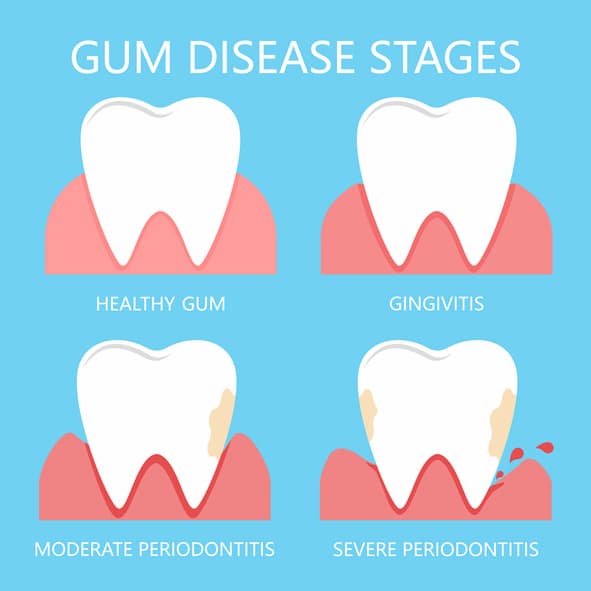 Have you seen a bit of blood in your sink when you brush your teeth lately? That bleeding can be one of the first warning signs that you’ve got gum disease.The mild variety is called gingivitis. If you don’t treat it, the infection can travel below your gum line and into your bone. Then it becomes a more serious form of gum disease called periodontitis.
Have you seen a bit of blood in your sink when you brush your teeth lately? That bleeding can be one of the first warning signs that you’ve got gum disease.The mild variety is called gingivitis. If you don’t treat it, the infection can travel below your gum line and into your bone. Then it becomes a more serious form of gum disease called periodontitis.Symptoms
You can find and treat the problem before it gets serious if you know what to look for. Take note if you notice:
Red, swollen gums: That’s one of the first signs your gums need attention. “Gum diseases typically start with inflammation along the gum line,” says Erik Sahl, DDS, assistant professor of periodontics at Loma Linda University. They may also feel tender or painful and bleed easily when you floss or brush.
Bad breath: Your mouth is a nice, warm, and wet home for millions of bacteria. They feed on the plaque, so the more of that you have, the bigger the buffet. “Bacteria release toxins that can irritate the gums and teeth and have a foul smell,” Sahl says.
It can also be a symptom of serious gum disease. Your breath usually doesn’t change much if you’ve got gingivitis.
Sensitive teeth: If a sip of a cold drink makes you wince, your teeth may be telling you something. That’s a symptom of gum disease that often goes hand in hand with shrinking gums. “With receding gums, the sensitive part of the tooth is exposed — called the dentin — causing sensitive teeth when exposed to cold water and air,” Sahl says.
Wiggly or shifting teeth: Does your smile look a little different lately? Gum disease can attack the bones that hold your teeth in place, making them loosen or move. Periodontitis is the main cause, and it can even change the way your teeth fit together when you bite.
Continued
Treatment
The goal is to control the infection. Your dentist will look at what’s affected to figure out where to start.
Deep cleaning: The first line of treatment for gum disease is a careful, in-depth cleaning.
Your dentist or hygienist can do something called scaling. That’s scraping off tartar both above and below your gum line. They may also do something called root planing. That’s when they use their tools to clean deep below the gum line usually 4mm or deeper into the gums.
Both methods may take more than one visit to the dentist.
Your dentist can go over many different treatment options with you to help with your gum disease, they may also recommend antimicrobial mouthwash. You swish this in your mouth as part of your daily brushing routine to help control bacteria. It’s available both by prescription and over-the-counter.
